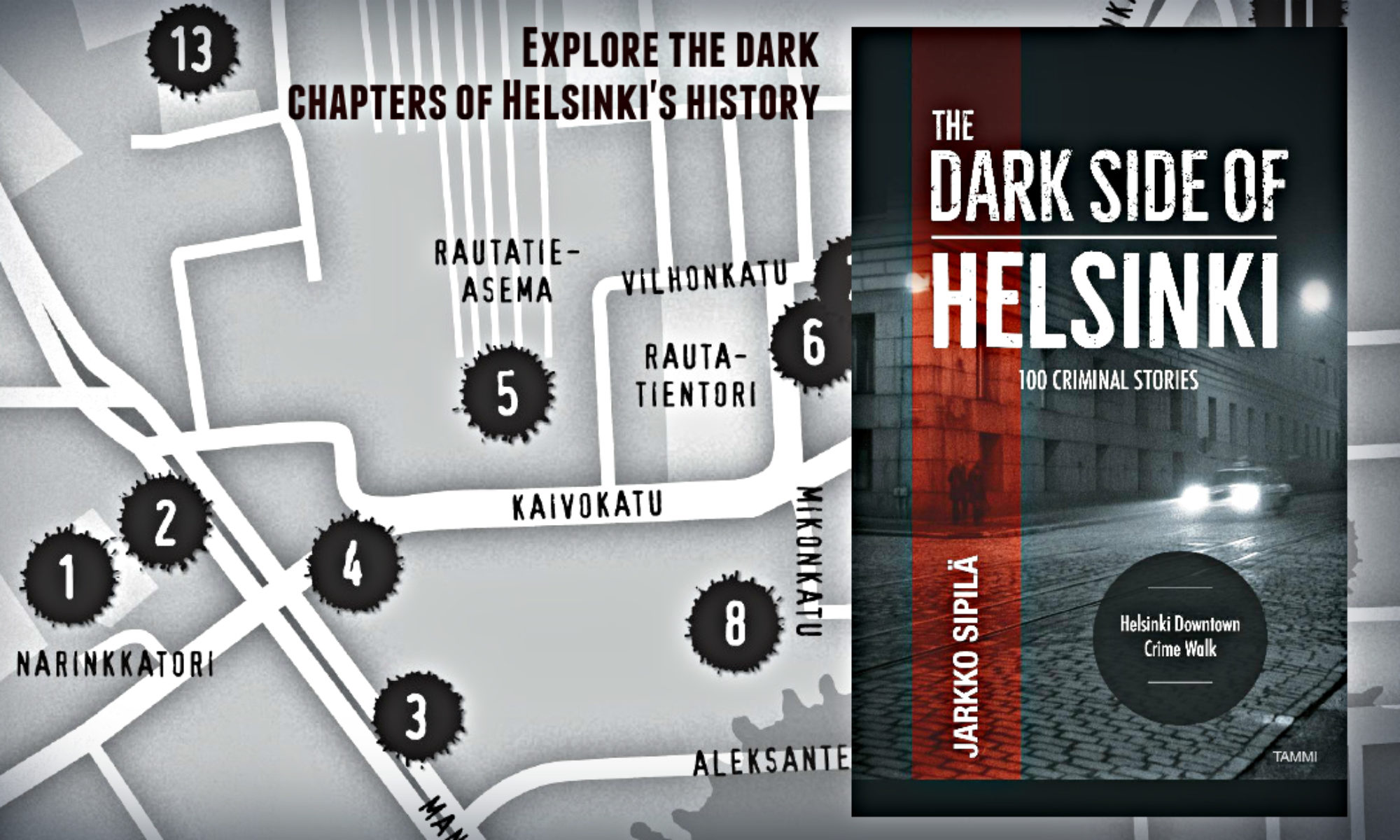 Explore the dark chapters of Helsinki’s history. Author and TV crime reporter Jarkko Sipilä tells the stories of Helsinki’s dark side, past and present. This book puts one hundred of Helsinki’s dark places on the map.
Explore the dark chapters of Helsinki’s history. Author and TV crime reporter Jarkko Sipilä tells the stories of Helsinki’s dark side, past and present. This book puts one hundred of Helsinki’s dark places on the map.
Helsinki has been occupied, burned, and bombed. People in the city have been swindled, killed, and frozen to death. It isn’t the buildings or the addresses that are evil—it’s the people. But the physical spaces provide a framework for telling the stories that make up the city’s history.
It’s easy to think of history as simply dates, leaders, wars, and economic figures. The stories about regular people tend to disappear—especially when the circumstances are grim. This book delves into the dark history of downtown Helsinki. And that includes not only murders and robberies—the dark side of Helsinki covers some gray areas, as well. Some of the events described here could actually be categorized as unpleasant memories.
For me, the stories are the thing. There’s no great historical significance in 17-year-old Sulo Grönfors rushing out onto thin ice in 1919 to rescue two 7-year-old girls, managing to save one girl before the ice gave way. Sulo and the other girl drowned. The story, found in an old newspaper, is worth retelling, however.
In 1930, a Finnish magazine ran a contest to come up with a slogan for Helsinki. The winning submission was “the White City of the North.” In this book, the city is black. Not pitch black, but dark and gritty. Helsinki was ordered built in the 1500s at the mouth of the Vantaa River, but was moved three miles southwest a century later to its current location. The most critical phase of the city’s history was at the turn of the 18th century, with the famine of the 1690s and the plague that struck the city in 1710-11.
In 1713, the residents themselves burned Helsinki to the ground before the Russians could come to occupy it. With the Treaty of Nystad in 1721, Helsinki was transferred back to Sweden’s domain, but Russian fortifications were all that remained where the city had once stood, consisting of peat-covered embankments, trenches, and clumps of branches, surrounded by palisades where the terrain allowed. Elsewhere, the Russians placed chevals de frise, defensive obstacles constructed of beams and sharpened posts. According to research conducted by the Finnish National Board of Antiquities, the fortifications had six bastions, and its irregular rectangular shape extended from the current Pohjoisesplanadi all the way to Vironkatu. Even the city’s paving stones were pulled up for use in the fort.
The city was gone, but the decision was made to rebuild. Only three small streets running between Senate Square and the Market Square remain from the city plan of those times: Sofiankatu, Katariinankatu and Helenankatu. Life in the city back then was very different from today. Fines were levied on residents who failed to maintain their portion of the street: the paving stones sank into the soft earth, the streets were mucky, and trash was strewn about with abandon. Domestic animals wandered freely, and dead pigs and horses lay in the streets.
The city began to grow in 1748, when the Swedish Empire decided to build the Suomenlinna fortress on the islands outside Helsinki. Sixty years later, in 1808, Suomenlinna was surrendered to the Russian navy without a fight, and Helsinki became part of Russia. The Russians moved the Finnish capital from Turku to Helsinki in 1812, and the current Empire-style downtown as well as the Market Square were built largely at the beginning of the 19th century. Finland gained its independence in 1917, and just one year later, the civil war hit the streets of Helsinki.
City grew fast. In the early years of the 20th century population doubled to 200 000. In 2017 it was 6420000.
There are plenty of success stories and tales of happiness and prosperity to be found in Helsinki’s history, but this book tells the stories of the city’s dark side.
Available:

